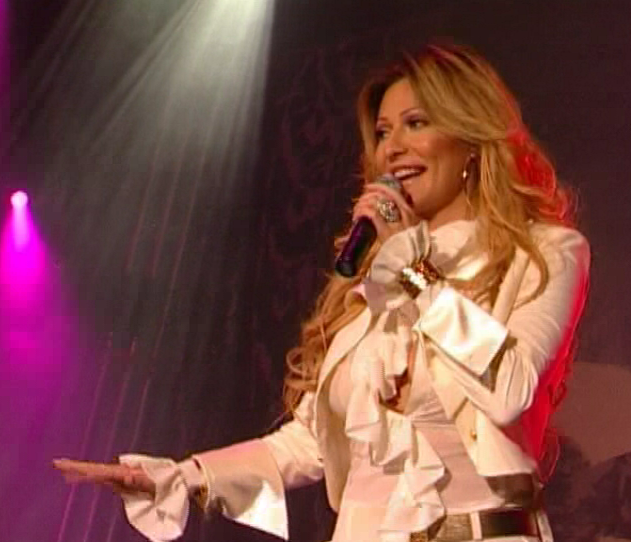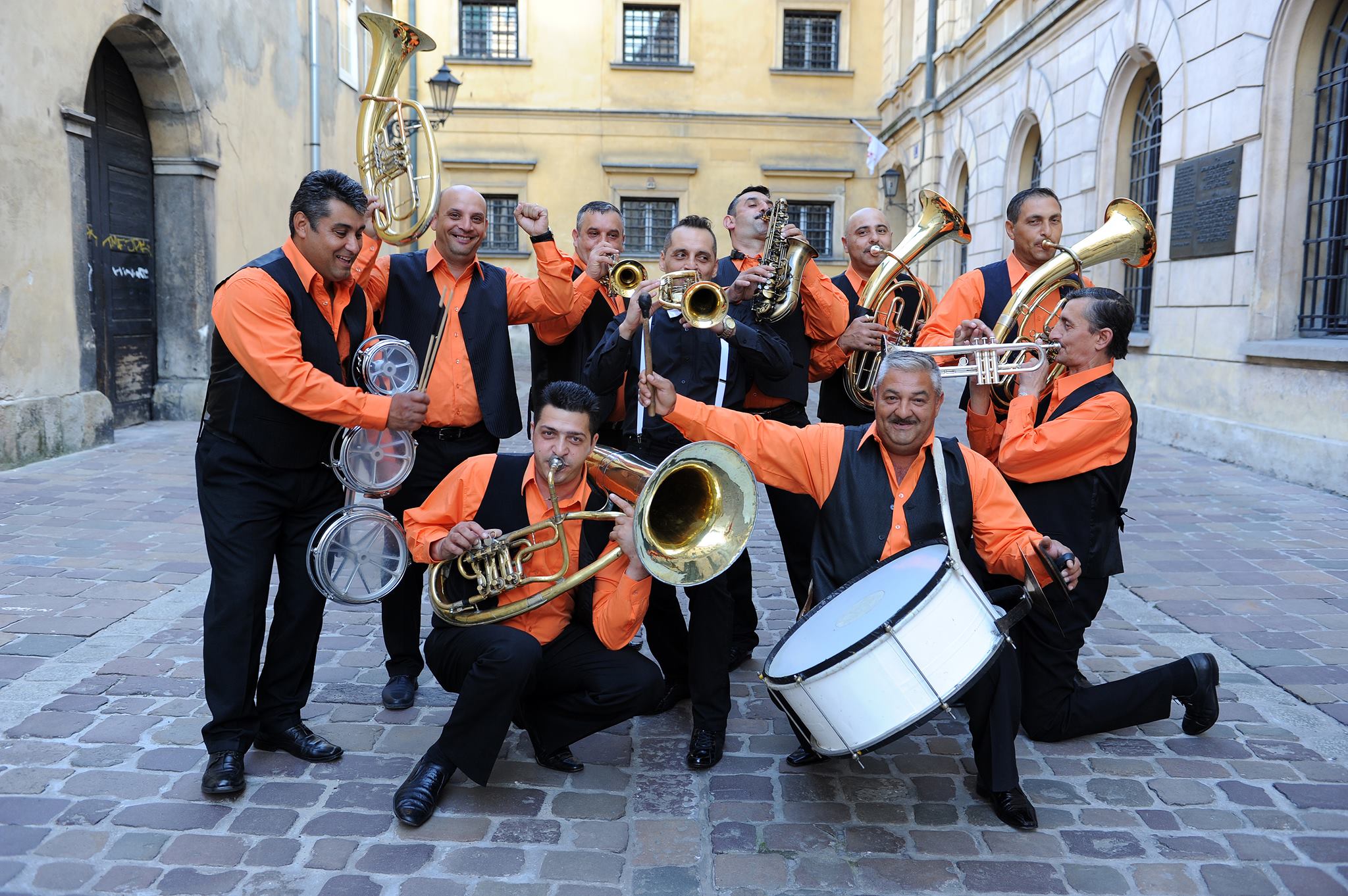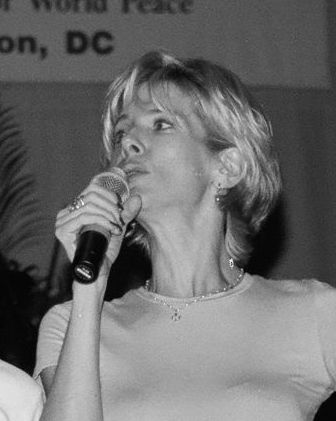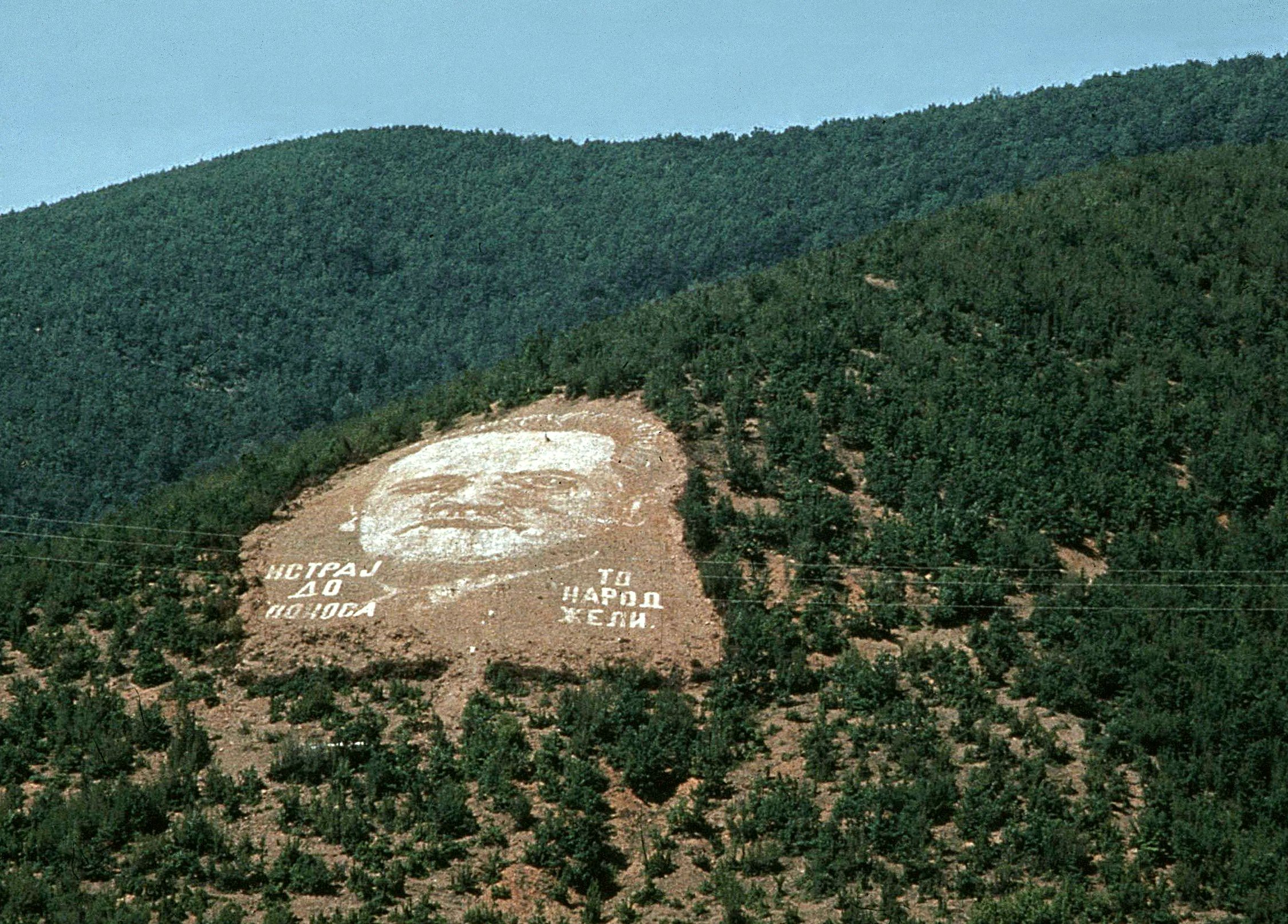|
Turbo-folk
Turbo-folk (sometimes referred as pop-folk or popular folk) is subgenre of contemporary pop music with its origins in Serbia, that initially developed during the 1980s and 1990s, with similar music styles in Bulgaria (chalga), Romania (manele) and Albania (tallava). It is a fusion genre of popular music, blending Serbian folk music with other genres: such as pop, rock, electronic and some hip-hop. Background and characteristics Turbo-folk music emerged as a subculture in the countryside during the 1970s before migrating to the city in the '80s and eventually reaching further expansion in the '90s during the rule of Slobodan Milošević, Yugoslav Wars, inflation and political isolation. The term was originally coined by Montenegrin musician Rambo Amadeus whilst jokingly referring to his own musical style. However, critics soon adopted this term which referred to a musical style blending folk music with elements of electronic music, Eurodance and hip-hop or other genres ... [...More Info...] [...Related Items...] OR: [Wikipedia] [Google] [Baidu] |
Tallava
Tallava or Talava is a music genre originating from Albanian-speaking communities in Kosovo as well as in North Macedonia, with a presence in Albania. Having originated in the Roma community in Kosovo in the 1990s, it evokes regional Balkan musical styles (e.g., microtones, vocal glissando, and certain musical instruments) and has become popular in Albania and North Macedonia. It is identified as part of the wider Pop-folk genre of the Southeastern Europe, which includes Chalga from Bulgaria, Skiladiko from Greece, Manele from Romania and Turbo-folk from Serbia. History Tallava originated in the 1980s and 1990s within the Albanian-speaking areas of Kosovo region, created by the Ashkali (Romani) ethnic minority community. The name is derived from Romani ''tel o vas'', meaning "under the hand", referring to the Chochek dance where the hands are waved delicately. Kosovo Albanian refugees of the Kosovo War in North Macedonia had brought their music with them, including Tallava. It ... [...More Info...] [...Related Items...] OR: [Wikipedia] [Google] [Baidu] |
SFR Yugoslavia
The Socialist Federal Republic of Yugoslavia, commonly referred to as SFR Yugoslavia or simply as Yugoslavia, was a country in Central and Southeast Europe. It emerged in 1945, following World War II, and lasted until 1992, with the breakup of Yugoslavia occurring as a consequence of the Yugoslav Wars. Spanning an area of in the Balkans, Yugoslavia was bordered by the Adriatic Sea and Italy to the west, by Austria and Hungary to the north, by Bulgaria and Romania to the east, and by Albania and Greece to the south. It was a one-party socialist state and federation governed by the League of Communists of Yugoslavia, and had six constituent republics: Bosnia and Herzegovina, Croatia, Macedonia, Montenegro, Serbia, and Slovenia. Within Serbia was the Yugoslav capital city of Belgrade as well as two autonomous Yugoslav provinces: Kosovo and Vojvodina. The SFR Yugoslavia traces its origins to 26 November 1942, when the Anti-Fascist Council for the National Liberation of Yugoslavia wa ... [...More Info...] [...Related Items...] OR: [Wikipedia] [Google] [Baidu] |
Balkan Brass Music
Balkan brass, popularly known by the Serbian name ''Truba'' ( sr-Cyrl, Труба, "Trumpet"), is a distinctive style of music originating in the Balkan region as a fusion between military music and folk music. In recent years, it has become popular in a techno-synth fusion throughout Europe, and in pop music in the Anglo-American sphere and throughout the world. Songs like Worth It by Fifth Harmony have brought the style to a new audience. In traditional form, it is popular throughout the Balkans, especially in Serbia, North Macedonia, Bulgaria, Moldova and Romania, although the turbo-folk variety attracts larger audiences. The energetic and fast beats encourage dance and are egalitarian, often resulting in participation by the entire audience; this unpretentious relationship with audiences, highly charged energy and loud and joyful performances by highly skilled musicians has contributed to its successes. Fans of bands inspired by Balkan bands, such as Gogol Bordelo, often ... [...More Info...] [...Related Items...] OR: [Wikipedia] [Google] [Baidu] |
Serbia
Serbia (, ; Serbian language, Serbian: , , ), officially the Republic of Serbia (Serbian language, Serbian: , , ), is a landlocked country in Southeast Europe, Southeastern and Central Europe, situated at the crossroads of the Pannonian Basin and the Balkans. It shares land borders with Hungary to the north, Romania to the northeast, Bulgaria to the southeast, North Macedonia to the south, Croatia and Bosnia and Herzegovina to the west, and Montenegro to the southwest, and claims a border with Albania through the Political status of Kosovo, disputed territory of Kosovo. Serbia without Kosovo has about 6.7 million inhabitants, about 8.4 million if Kosvo is included. Its capital Belgrade is also the List of cities in Serbia, largest city. Continuously inhabited since the Paleolithic Age, the territory of modern-day Serbia faced Slavs#Migrations, Slavic migrations in the 6th century, establishing several regional Principality of Serbia (early medieval), states in the early Mid ... [...More Info...] [...Related Items...] OR: [Wikipedia] [Google] [Baidu] |
Serbian Folk Music
Serbian folk music ( sr, српска народна музика / ''srpska narodna muzika'') refers to, in the narrow sense, the "older" style of Serbian folk music, predating the "newer" ( sr, link=no, новокомпонована / ''novokomponovana'', "newly composed") style which emerged in the 1970s and 1980s as a result of urbanisation. The characteristic musical instruments included the accordion and violin, while traditional instruments such as tamburica, frula, were also used. Notable performers ;Male * Cune Gojković (1932–2017) * Predrag Živković Tozovac (1936–2021) *Miroslav Ilić (born 1950) * Staniša Stošić (1945–2008) *Sinan Sakić (1956–2018) *Šaban Šaulić (1951–2019) *Šeki Turković (born 1953) * Marinko Rokvić (1954-2021) ;Female *Lepa Lukić (born 1940) *Snežana Đurišić (born 1959) *Merima Njegomir (born 1953) *Vasilija Radojčić (1936–2011) *Brankica Vasić (Бранкица Васић), stage name Vasilisa *Lepa Brena (born 1960) ... [...More Info...] [...Related Items...] OR: [Wikipedia] [Google] [Baidu] |
Subculture
A subculture is a group of people within a culture that differentiates itself from the parent culture to which it belongs, often maintaining some of its founding principles. Subcultures develop their own norms and values regarding cultural, political, and sexual matters. Subcultures are part of society while keeping their specific characteristics intact. Examples of subcultures include BDSM, hippies, goths, bikers, punks, skinheads, hip-hoppers, metalheads, and cosplayers. The concept of subcultures was developed in sociology and cultural studies. Subcultures differ from countercultures. Definitions The ''Oxford English Dictionary'' defines subculture, in regards to sociological and cultural anthropology, as "an identifiable subgroup within a society or group of people, esp. one characterized by beliefs or interests at variance with those of the larger group; the distinctive ideas, practices, or way of life of such a subgroup." As early as 1950, David Riesman distinguished b ... [...More Info...] [...Related Items...] OR: [Wikipedia] [Google] [Baidu] |
1970s In Music
: ''For music from a year in the 1970s, go to 70 , 71 , 72 , 73 , 74 , 75 , 76 , 77 , 78 , 79 This article includes an overview of the major events and trends in popular music in the 1970s. In North America, Europe, and Oceania, the decade saw the rise of disco, which became one of the biggest genres of the decade, especially in the mid-to-late 1970s. In Europe, a variant known as Euro disco rose in popularity towards the end of the 1970s. Aside from disco, funk, smooth jazz, jazz fusion, and soul music remained popular throughout the decade. Rock music played an important part in the Western musical scene, with punk rock thriving throughout the mid to late 1970s. Other subgenres of rock, particularly glam rock, hard rock, progressive, art rock, and heavy metal achieved various amounts of success. Other genres such as reggae were innovative throughout the decade and grew a significant following. Hip hop emerged during this decade, but was slow ... [...More Info...] [...Related Items...] OR: [Wikipedia] [Google] [Baidu] |
1980s In Music
: ''For music from a year in the 1980s, go to 80 , 81 , 82 , 83 , 84 , 85 , 86 , 87 , 88 , 89'' This article includes an overview of the famous events and trends in popular music in the 1980s. The 1980s saw the emergence of electronic dance music and new wave, also known as Modern Rock. As disco fell out of fashion in the decade's early years, genres such as post-disco, Italo disco, Euro disco, and dance-pop became more popular. Rock music continued to enjoy a wide audience. Soft rock, glam metal, thrash metal, shred guitar characterized by heavy distortion, pinch harmonics, and whammy bar abuse became very popular. Adult contemporary, quiet storm, and smooth jazz gained popularity. In the late 1980s, glam metal became the largest, most commercially successful brand of music worldwide. The 1980s are commonly remembered for a great increase in the use of digital recording, associated with the usage of synthesizers, with synth-pop music and other electroni ... [...More Info...] [...Related Items...] OR: [Wikipedia] [Google] [Baidu] |
1990s In Music
Popular music in the 1990s saw the continuation of teen pop and dance-pop trends which had emerged in the 1970s and 1980s. Furthermore, hip hop grew and continued to be highly successful in the decade, with the continuation of the genre's golden age. Aside from rap, reggae, contemporary R&B, and urban music in general remained extremely popular throughout the decade; urban music in the late-1980s and 1990s often blended with styles such as soul, funk, and jazz, resulting in fusion genres such as new jack swing, neo-soul, hip hop soul, and g-funk which were popular. Similarly to the 1980s, rock music was also very popular in the 1990s, yet, unlike the new wave and glam metal-dominated scene of the time, grunge, Britpop, industrial rock, and other alternative rock music emerged and took over as the most popular of the decade, as well as punk rock, ska punk, and nu metal, amongst others, which attained a high level of success at various points throughout the years. El ... [...More Info...] [...Related Items...] OR: [Wikipedia] [Google] [Baidu] |
Yugoslav Wars
The Yugoslav Wars were a series of separate but related#Naimark, Naimark (2003), p. xvii. ethnic conflicts, wars of independence, and Insurgency, insurgencies that took place in the Socialist Federal Republic of Yugoslavia, SFR Yugoslavia from 1991 to 2001. The conflicts both led up to and resulted from the breakup of Yugoslavia, which began in mid-1991, into six independent countries matching the six entities known as republics which previously composed Yugoslavia: Slovenia, Croatia, Bosnia and Herzegovina, Montenegro, Serbia, and North Macedonia (previously named ''Macedonia''). Yugoslavia's constituent republics declared independence due to unresolved tensions between ethnic minorities in the new countries, which fuelled the wars. While most of the conflicts ended through peace accords that involved full international recognition of new states, they resulted in a massive number of deaths as well as severe economic damage to the region. During the initial stages of the breaku ... [...More Info...] [...Related Items...] OR: [Wikipedia] [Google] [Baidu] |
Slobodan Milošević
Slobodan Milošević (, ; 20 August 1941 – 11 March 2006) was a Yugoslav and Serbian politician who was the president of Serbia within Yugoslavia from 1989 to 1997 (originally the Socialist Republic of Serbia, a constituent republic of the Socialist Federal Republic of Yugoslavia, from 1989 to 1992) and president of the Federal Republic of Yugoslavia from 1997 to 2000. Formerly a high-ranking member of the League of Communists of Serbia (SKS) during the 1980s, he led the Socialist Party of Serbia from its foundation in 1990 until 2003. Born in Požarevac, he studied law at the University of Belgrade Faculty of Law and joined the League of Socialist Youth of Yugoslavia as a student. During the 1960s he served as an advisor to mayor of Belgrade Branko Pešić, and was later appointed chairman of Tehnogas and Beobanka, roles which he served until the 1980s. Milošević rose to power in 1987 by promoting populist and nationalist views, arguing for the reduction of power of S ... [...More Info...] [...Related Items...] OR: [Wikipedia] [Google] [Baidu] |
Inflation
In economics, inflation is an increase in the general price level of goods and services in an economy. When the general price level rises, each unit of currency buys fewer goods and services; consequently, inflation corresponds to a reduction in the purchasing power of money. The opposite of inflation is deflation, a sustained decrease in the general price level of goods and services. The common measure of inflation is the inflation rate, the annualized percentage change in a general price index. As prices do not all increase at the same rate, the consumer price index (CPI) is often used for this purpose. The employment cost index is also used for wages in the United States. Most economists agree that high levels of inflation as well as hyperinflation—which have severely disruptive effects on the real economy—are caused by persistent excessive growth in the money supply. Views on low to moderate rates of inflation are more varied. Low or moderate inflation may be attri ... [...More Info...] [...Related Items...] OR: [Wikipedia] [Google] [Baidu] |


.jpg)




